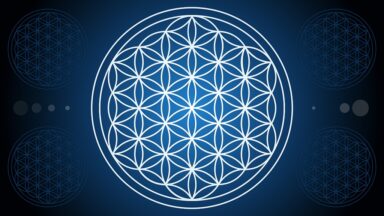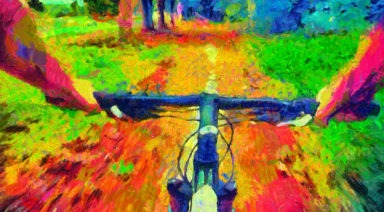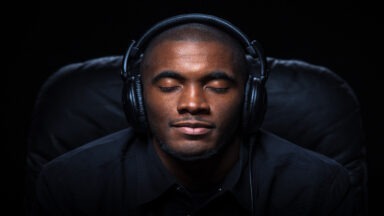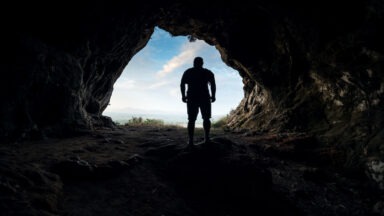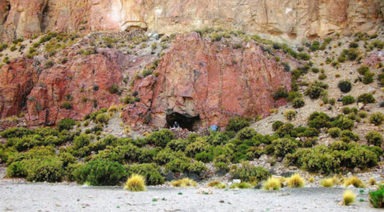What Is Remote Viewing and How Is It Developed?

Table of Contents
- What Is Remote Viewing?
- Stanford Research and the Origins of Remote Viewing
- Understanding the Difference Between Clairvoyance and Remote Viewing
- Remote Viewing Training: How to Practice and Actionable Techniques
- Can Everyone Develop Remote Viewing?
- Spiritual Benefits of Developing Remote Viewing
- Myths and Facts About the Art of Remote Viewing
- The Continuing Debate Around Remote Viewing
What Is Remote Viewing?
Remote viewing is one of the most advanced psychic abilities and a structured practice of extrasensory perception (ESP) that allows a remote viewer to describe or gather information about a distant target site using only the mind. Unlike traditional sensory perception, this technique seeks impressions of locations, objects, or events without relying on the five physical senses. Supporters view it as a disciplined method of accessing hidden information, while skeptics often consider it a form of psychic phenomena without scientific proof.
The concept of remote viewing has been explored in both spiritual and experimental settings, where researchers and practitioners alike have tested whether the human mind can access information beyond normal perception. Reports of successful sessions describe participants sketching landscapes, describing structures, or identifying key features of a location they have never physically visited.
The process follows a multi-stage protocol. A typical remote viewing session begins with relaxation or meditation to quiet mental distractions, followed by setting a clear intention to connect with the chosen target. During the session, the viewer records raw sensory impressions, such as shapes, textures, sounds, or temperatures, before attempting to interpret them. Patience, consistent training, and repeated sessions are considered essential for refining accuracy and building confidence in the results.
Stanford Research and the Origins of Remote Viewing
Remote viewing moved to formal study in the early 1970s when physicists Russell Targ and Harold Puthoff began experiments at the Stanford Research Institute (SRI) in California. Their work sought to determine whether the human mind could obtain information about distant places or objects without ordinary sensory input, a concept they referred to as “remote perception.”
At SRI, trained participants known as remote viewers attempted to describe hidden or distant target sites, locations, objects, or events, while shielded from all conventional cues. Sessions followed a controlled protocol in which viewers recorded mental impressions such as shapes, textures, and spatial relationships. According to reports, some results produced descriptions accurate enough to be statistically significant beyond chance, sparking interest from military and intelligence agencies.
This research eventually attracted funding from the U.S. government, including the CIA and the Department of Defense, under programs like the now-declassified Stargate Project. These initiatives explored whether remote viewing could aid intelligence gathering during the Cold War and led to decades of classified testing. While the studies generated intriguing data, critics highlighted issues with experimental controls and the often vague nature of the information obtained. Today, despite Targ’s continued advocacy and writings on the subject, mainstream science generally regards remote viewing as pseudoscience, noting that no reproducible evidence confirms it as a reliable phenomenon.
Understanding the Difference Between Clairvoyance and Remote Viewing
Clairvoyance and remote viewing are psychic abilities used to obtain information beyond the physical senses, yet their goals and methods differ in key ways. Clairvoyance is the ability to receive spontaneous or intentional visual impressions about people, places, or events outside normal sensory range. It can arise as a natural gift or be developed through training, allowing a person to perceive images, colors, symbols, or entire scenes that appear within the mind’s eye.
Remote viewing, by contrast, is a carefully structured form of remote perception designed to describe details of a distant target site without physical access. This skill follows a defined protocol to collect accurate and verifiable data. During a remote viewing session, the viewer records raw sensory impressions, such as shapes, sounds, textures, or spatial relationships, while using systematic methods to reduce conscious analysis and outside influence.
The range of information also differs. Clairvoyants may receive broad, symbolic visions or intuitive messages that require interpretation, including insights about a person’s emotions, potential future events, or abstract themes. Remote viewers, on the other hand, focus on describing specific, tangible characteristics of the target, such as geographic features, structural elements, or measurable details that can later be checked against reality.
Although both practices claim access to knowledge beyond the five senses, clairvoyance remains more subjective and open-ended, while remote viewing emphasizes repeatable steps and data that can be compared to actual outcomes. These distinctions give each practice its own set of applications and training approaches, offering different pathways for exploring extrasensory perception.

How to Remote View
Remote viewing is presented as a disciplined way to gather information about a distant target site through focused mental perception. Rather than waiting for spontaneous visions, a remote viewer follows structured steps to capture sensory impressions and record them for later verification. Training focuses on relaxing the body, calming the mind, and developing the ability to notice subtle impressions without letting analysis interfere.
Mental Preparation and Focus
Begin by creating a quiet environment where you can relax and settle your thoughts. Deep breathing or meditation reduces mental noise and strengthens concentration. Practitioners set a clear intent to perceive details about the target while keeping thoughts neutral. This focused state supports the reception of impressions that might otherwise be missed.
The Viewing Process
During a remote viewing session, a monitor or assistant may provide a neutral cue for the hidden target. Quickly note the first impressions—colors, shapes, sounds, or temperatures—without naming the object or trying to interpret it. Recording these raw perceptions before analysis helps preserve data that can later be matched to the target. Treat each sensation as information, even if it seems random.
Development and Refinement
Consistent practice strengthens accuracy and detail in remote viewing work. After each session, compare your notes with the actual target to identify patterns and improve precision. Over time, this routine builds confidence and reliability while helping you expand from basic impressions to more complex sensory details.
Beginner Practice Exercise
Developing remote viewing requires practice and a systematic approach. Here is a simple exercise you can do to start training this skill:
- Select Targets: Ask a friend or family member to choose 5–10 varied images from magazines, such as landscapes, people, or objects.
- Prepare the Envelopes: Have your assistant place each image face down in a sealed envelope and keep the contents secret.
- Calm Your Mind: Find a quiet spot, close your eyes, and breathe deeply to reduce distractions.
- Set the Stage: Write down the date, time, and any distracting thoughts to clear your mind before you begin.
- Describe the Target: Without opening the envelope, write down the first basic impressions that arise, textures, colors, patterns, movements, without judgment or analysis.
- Draw a Sketch: Create a rough sketch of the shapes or structures you sensed. Artistic skill is not important; focus on capturing the essence of the impressions.
- Get Feedback: Open the envelope and compare your notes and sketch with the actual image. Reflect on similarities and differences to learn from the session.
This foundational exercise provides immediate feedback and helps develop the mental discipline that supports more advanced techniques. By repeating the process and reviewing your notes after every session, you begin to recognize subtle patterns, sharpen your attention to small sensory details, and train your mind to capture impressions before analysis sets in. Over time, these habits create the steady focus and self-awareness needed to attempt longer sessions, more complex target sites, and the structured protocols used by experienced remote viewers.
Can Everyone Develop Remote Viewing?
Remote viewing is a skill that most people can learn and improve with steady practice. While a few individuals may show natural sensitivity from the start, consistent training is what allows the majority of students to strengthen their abilities over time. Progress depends less on innate “psychic powers” and more on patience, focus, and regular sessions that teach the mind to notice subtle impressions.
Key factors that support development include:
- Regular practice: Short, frequent sessions help train attention and reduce mental noise.
- Strong concentration: The ability to maintain a quiet, alert mind is critical for receiving accurate impressions.
- Open mindset: Curiosity and a willingness to record even faint or unexpected impressions prevent early filtering.
- Structured methods: Following a step-by-step protocol or guided training provides consistent feedback and measurable improvement.
- Patience and perseverance: Results may start small, but skill grows as the mind learns to separate fleeting thoughts from genuine target information.
Spiritual Benefits of Developing Remote Viewing
Remote viewing is more than a method for gathering impressions about a distant target site. Practicing it over time can transform the way you experience the world and your inner self. Training as a remote viewer calls for quiet focus, disciplined attention, and regular sessions, and these habits naturally foster deeper awareness and a stronger sense of connection. Many people find that the mental discipline required for remote viewing work carries over into everyday life, creating benefits that go far beyond the sessions themselves.
Below are some of the most frequently reported spiritual and personal gains:
- Spiritual connection: Regular practice encourages a stronger bond with the universe and with your own inner life. This deeper connection can spark insight into personal purpose and the larger patterns of existence.
- Expanded awareness: Reaching for information beyond ordinary senses stretches perception and helps you recognize the interdependence of all things. Over time, many viewers describe a heightened sensitivity to subtle patterns in daily life.
- Sharper intuition: Recording and reviewing impressions during a remote viewing session strengthens subtle perception. Many practitioners notice clearer gut feelings and more confidence when making important choices.
- Relaxation and balance: The quiet, focused state required for each session naturally promotes deep relaxation. This meditative practice can reduce stress and support steady emotional balance.
- Personal growth: Working with remote viewing often reveals self-imposed limits. Meeting those challenges builds patience, resilience, and a broader perspective on the capabilities of the human mind.
Myths and Facts About the Art of Remote Viewing
Remote viewing has always carried an air of mystery, which makes it easy for rumors and misconceptions to spread. Sorting myth from reality helps anyone interested in the practice approach it with realistic expectations and a clear understanding of what this remote perception technique can and cannot do.
Remote Viewing Myths
- For psychics only: Many believe that only gifted psychics or psychic mediums can succeed as remote viewers. In truth, structured training protocols show that people without any prior extrasensory experience can learn the process.
- Dangerous to the mind: Some worry that remote viewing might cause mental harm or invite negative forces. When practiced with proper guidance, it is no more harmful than meditation or focused visualization.
- Unlimited access: A frequent claim is that a skilled viewer can observe anything, anywhere, at any time. In practice, sessions often yield partial impressions, symbolic fragments, or ambiguous details rather than unlimited surveillance.
- Guaranteed accuracy: Movies and sensational reports sometimes suggest that trained viewers always describe a target site with perfect precision. In reality, even experienced practitioners have sessions where impressions are vague, contradictory, or incorrect.
- Proof of supernatural powers: Supporters sometimes frame successful sessions as unquestionable evidence of psychic powers. Skeptics counter that hits can stem from coincidence, selective memory, or subconscious pattern recognition, so results remain open to debate.
Remote Viewing Facts
- Requires steady practice: Consistent training, patience, and honest feedback are essential. Progress comes from refining mental discipline and learning to separate subtle impressions from imagination.
- Documented research history: Programs at institutions like the Stanford Research Institute (SRI) and government projects such as Stargate show that the topic has been tested under controlled conditions, even though the scientific community remains divided on its validity.
- Not infallible: A single session may contain both accurate and inaccurate details. Statistical studies have found results better than chance in some cases, but no protocol eliminates human error or subjective interpretation.
- Often labeled a pseudoscience: Despite decades of experiments, remote viewing lacks a mechanism recognized by mainstream science. Researchers describe it as a form of extrasensory perception (ESP), but its status remains unproven and controversial.
The Continuing Debate Around Remote Viewing
Remote viewing remains a topic that straddles the line between curiosity, research, and controversy. Decades after the early experiments at SRI and the CIA’s Stargate Project, interest in the practice continues in spiritual circles, private training groups, and online communities. Supporters point to statistically significant studies and personal experiences as evidence that the human mind may have abilities beyond ordinary senses. Skeptics view those same results as chance, methodological flaws, or creative interpretation rather than proof of genuine psychic phenomena.
Whether approached as a meditative discipline, a tool for exploring consciousness, or simply a historical curiosity, remote viewing invites people to test the limits of perception for themselves. Practicing relaxation, careful observation, and structured feedback can strengthen focus and intuition even if no “psychic spy” skills emerge. By understanding the myths, research history, and training methods, readers can decide how much of this psychic phenomenon feels meaningful while maintaining a grounded perspective on what remains unverified.
Astral Journey: What It Is, How to Do It, and What You Can Discover

An astral journey is a fascinating practice in which consciousness detaches from the physical body to explore the astral plane, a dimension of existence beyond the tangible world. In this article, we will delve into how an astral journey can be consciously induced, explore the transformative benefits it offers, and demystify the risks commonly associated with this ancient experience.
Table of Contents
- What Is an Astral Journey and What Is It For?
- Differences Between an Astral Journey and a Lucid Dream
- Step-by-Step Guide for a Safe Astral Journey
- How to Return from an Astral Journey
- Benefits of Astral Travel
- Dangers of Astral Travel
- Advancing in Astral Travel Practice
- Integrating Astral Travel into Daily Life
What Is an Astral Journey and What Is It For?
An astral journey is an experience in which consciousness separates from the physical body and moves through the astral plane, a non-material dimension that coexists with the physical world. Although many people experience it unconsciously while sleeping, it is possible to learn how to consciously and voluntarily induce these journeys through specific techniques of relaxation, meditation, and visualization.
This practice allows individuals to explore realities beyond the physical senses. Those who have had conscious astral journey experiences often describe an expansion of perception, encounters with other forms of consciousness, and access to information that is not available in the usual waking state.
The astral journey can be a tool for spiritual development and self-knowledge. By transcending the limits of the physical body, the practitioner can gain a deeper understanding of the nature of being, overcome the fear of death, and strengthen the connection with their spiritual essence.
In the third season of Mystery Teachings, available on Gaia, an entire episode is dedicated to astral journeys. There, Theresa Bullard shares effective techniques for initiating in the astral plane, addressing what should and should not be done, and demystifying several myths associated with the journey through the astral realms.
Differences Between an Astral Journey and a Lucid Dream
Although they may seem similar, an astral journey and a lucid dream are distinct experiences. In a lucid dream, the person becomes aware that they are dreaming and can control certain elements of the dream, but remains within the dream plane generated by the mind. In contrast, an astral journey involves the separation of consciousness from the physical body to explore a real and external plane, different from the internal world of dreams.
Additionally, the purpose and experience also differ. While lucid dreaming often has a recreational or symbolic component, the astral journey has a more experiential and spiritual nature. The level of clarity, intensity, and perception of reality in the astral plane is notably higher than in dreams, and the experiences obtained can have a profound impact on the practitioner’s daily life.
Step-by-Step Guide for a Safe Astral Journey
To have a safe astral journey, it is essential to follow a structured practice that combines mental preparation, physical relaxation, and visualization techniques. In Mystery Teachings, Theresa Bullard presents a progressive method that can be integrated into the daily routine as training. This step-by-step guide helps to induce astral projection gradually, consciously, and safely, allowing the practitioner to explore the astral plane with greater clarity and confidence.
- Preparatory meditation: Dedicate 15 minutes a day to meditate with your back straight. This posture favors the energy flow through the chakras and allows you to reach a receptive mental state.
- Initial visualization: Observe a white dot on a black background or vice versa. Then close your eyes and try to keep a clear mental image of the dot.
- Daily visual training: Practice this visualization every day for a week. This strengthens concentration and trains the mind to sustain images in deep relaxation states.
- Expansion of the dot: In the second week, mentally expand the visualized dot until it transforms into a large space. This space represents the threshold between the physical and the astral plane.
- Tunnel formation: Imagine that this space turns into a tunnel connecting both planes. Visualize yourself entering this transitional tunnel with your consciousness.
- Visualized destination: At the end of the tunnel, mentally create a specific place you want to reach. Keep your intention clear and use that goal as an anchor for the astral experience.
- Conscious movement: Move through the astral plane using the speed of thought. This form of movement allows you to explore the environment fluidly and without physical effort.
How to Return from an Astral Journey
The return to the physical body after an astral journey usually occurs naturally, as consciousness is permanently connected to the body through what many practitioners describe as the “silver cord.” In most cases, it is enough to direct attention toward the physical body or internally express the intention to return for the process to occur immediately. This reconnection is usually smooth, although some people may experience sensations of vibration or a slight jolt upon returning.
However, there are simple techniques that can facilitate a more conscious and gradual return. Slightly moving the fingers of the hands or feet, taking a deep breath, or visualizing the physical body as an anchoring point are effective methods to reintegrate without abruptness. With practice, the return to the body becomes increasingly natural, allowing the experience to be concluded in a balanced way and wakefulness to be resumed with clarity and stability.
Benefits of Astral Travel
Astral travel offers a wide range of spiritual and personal benefits, allowing practitioners to explore beyond physical limitations and gain new perspectives on life and existence. Reaching these states of consciousness can result in a profound sense of liberation and knowledge, alleviating fears such as the fear of death and strengthening the connection with the higher self and spiritual dimensions.
- Expansion of consciousness: Astral travel allows one to experience a broader reality beyond daily life, promoting greater mental openness and flexibility in thinking.
- Understanding life after death: Practicing astral projection can provide comfort and insight into what might exist beyond physical life, reducing the fear of death.
- Development of psychic abilities: Through astral travel, some people report an increase in their intuitive and psychic abilities, such as clairvoyance or extrasensory perception.
- Emotional healing: Consciously revisiting past experiences from an astral perspective can provide new understanding that helps in the emotional healing process.
- Increased creativity: Astral travel can inspire individuals by giving them access to visions and ideas beyond the reach of conventional thought.
Dangers of Astral Travel
Although astral travel is safe, there are certain myths that may cause concern among practitioners. It is important to clarify these myths to ensure that participants feel comfortable and secure during their astral experiences. Understanding that these “dangers” are largely unfounded can help practitioners approach astral travel with confidence and peace of mind.
- Fear of not returning to the physical body: A common myth is the fear of getting stuck in the astral plane and not being able to return to the physical body. However, the so-called “silver cord,” which connects the astral body to the physical body, is not something that can be broken. Instead, it is a metaphorical connection that always ensures the return to the body.
- Encounters with negative entities: Some practitioners express concern about encountering malicious entities during their travels. Protecting oneself with light visualizations and setting clear and firm intentions for safety before the journey can help avoid these experiences and ensure a positive astral environment.
- Disorientation and fear: For beginners, it is common to feel some disorientation or fear when exploring astral experiences for the first time. These feelings are usually mild and can be easily managed with practice and preparation. Learning control techniques and cultivating a positive mental environment before starting the journey can help overcome these moments and improve the overall experience.
Advancing in Astral Travel Practice
For those interested in deepening their astral travel practice, it is essential to develop a consistent routine and employ advanced meditation and visualization techniques. As practitioners gain more experience, they can begin to explore various aspects of the astral plane with greater control and purpose. This includes learning to navigate to specific locations, interact with different spiritual entities, and receive teachings or guidance.
Additionally, sharing experiences with a community of practitioners can be invaluable. Joining groups or workshops where techniques and personal experiences are discussed helps validate and enrich one’s journey in astral travel. The guidance of an experienced mentor can also be a great advantage, offering the opportunity to learn through direct teaching and receive feedback that is crucial for personal and spiritual growth in this practice.
Integrating Astral Travel into Daily Life
Integrating astral travel into daily life means more than just having out-of-body experiences; it involves applying the perceptions and teachings obtained during these journeys to everyday physical existence. For example, insights gained about personal challenges or behavioral patterns can be used to improve relationships, make more informed decisions, and cultivate greater inner peace.
On the other hand, regularly practicing astral travel can foster a sense of spiritual connection and purpose that transcends mundane activities. This may manifest as greater empathy toward others, a commitment to service or community, and an interest in additional spiritual practices that complement personal growth. For those who deeply integrate these practices, astral travel becomes a way of life that fully embraces the multidimensional nature of human existence.










